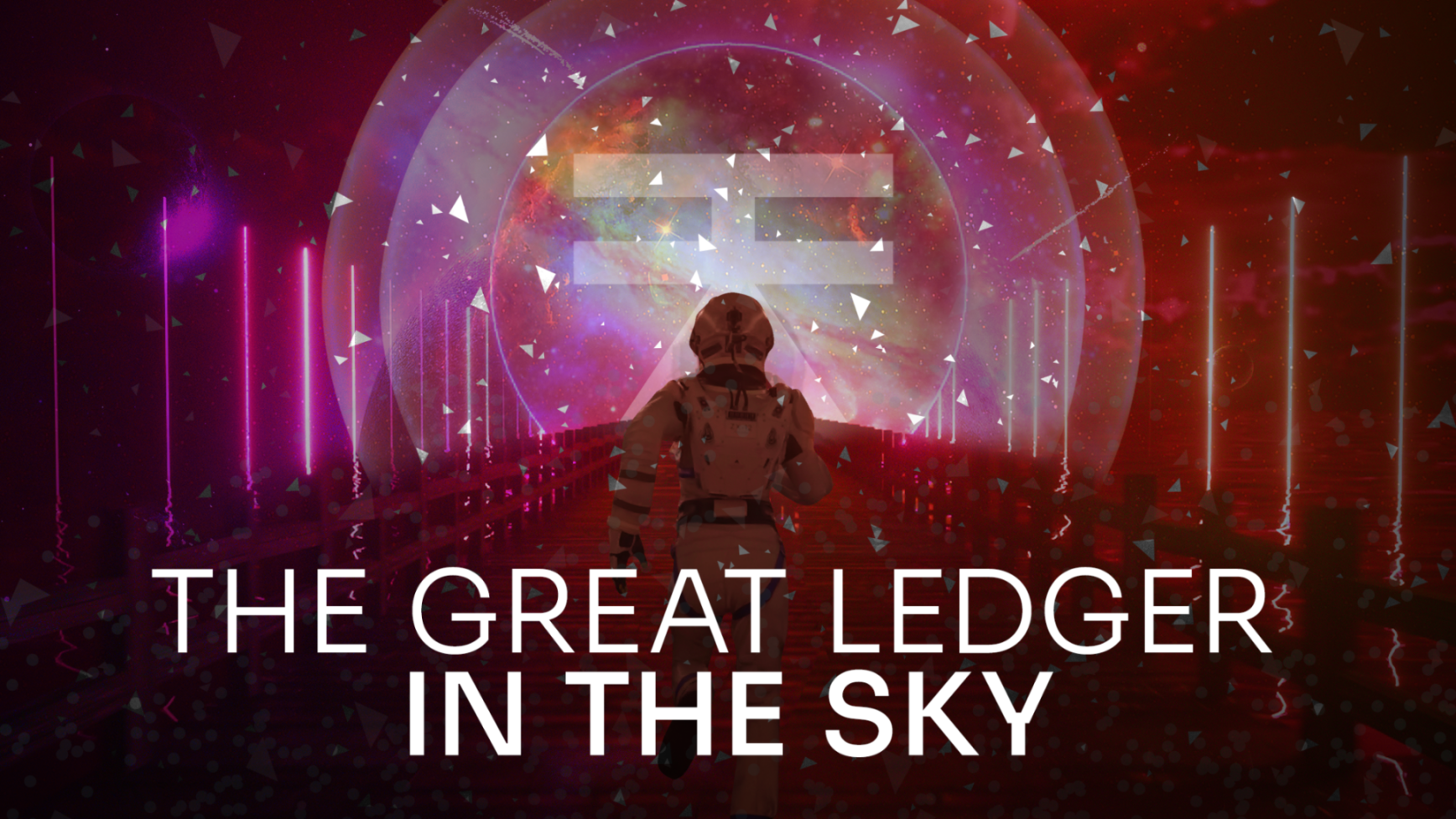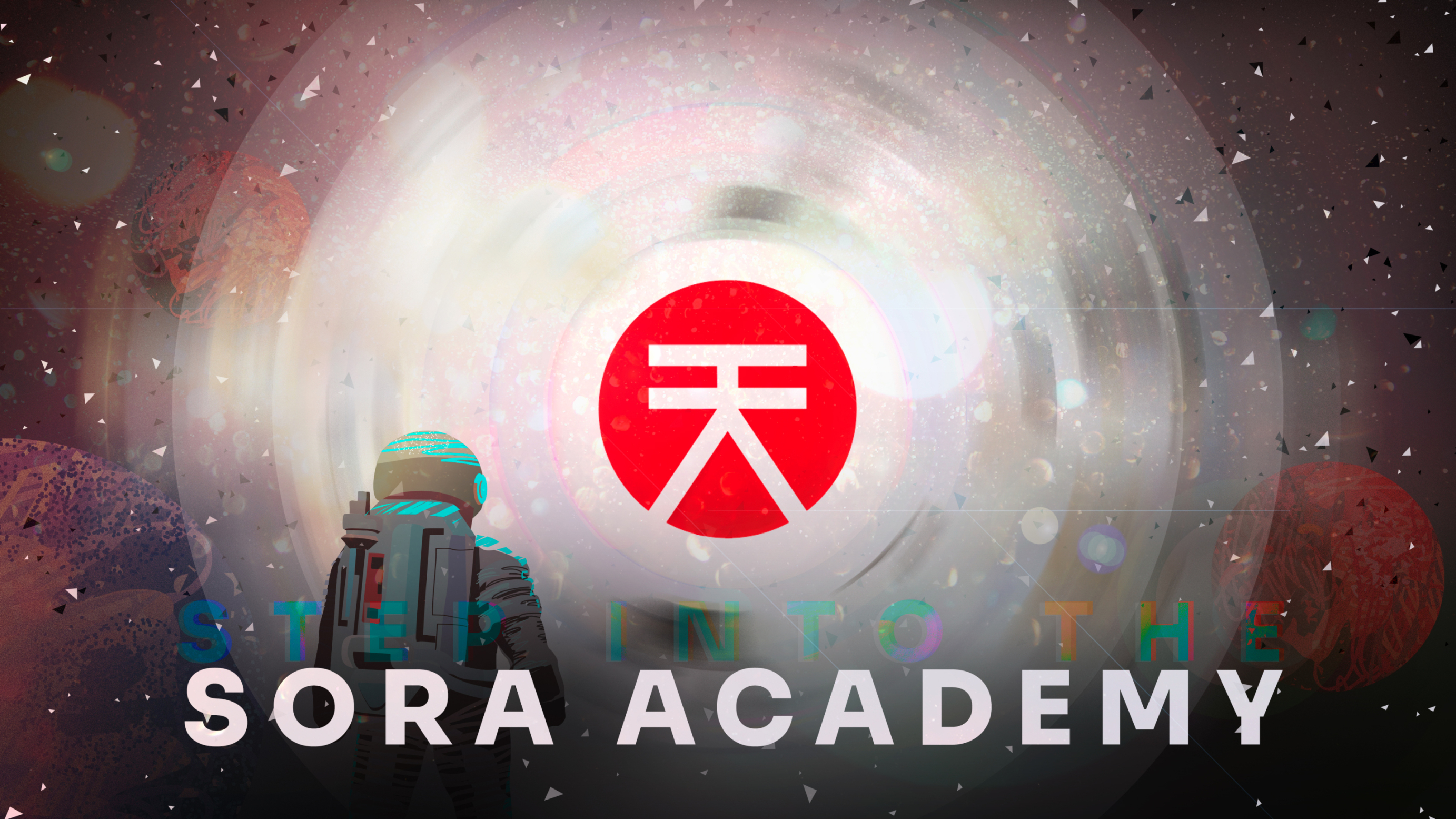SORA Academy
Thanks to blockchain technology, finance has become more inclusive and less centralized, sparking a sector known as Decentralized Finance, and with access to a crypto asset wallet, people can participate in activities such as swapping tokens (exchanges), liquidity provision, NFT Markets, and more. The SORA Academy is the best way to get you started in DeFi on the SORA network.
The Great Ledger in the Sky: An Introduction to Blockchain Assets

Try to picture for a moment an accountant’s ledger book in the sky, where incoming and outgoing transactions are registered, and everyone can see all the transactions recorded. Now imagine that instead of one accountant, there are a huge number of them, all competing to verify the transactions that go on in this great ledger. You could say that this is a blockchain in a nutshell.
Now imagine that in this ledger, you can add contracts that don’t require human interference (other than the person who wrote the code in the contract). These contracts are audited by external firms to make sure that they do not have any flaws in them, and they resort to external sources of information called “oracles” to provide data about the world, such as the temperature, climate conditions, stock market values or even sporting events scores. Thanks to these oracles, smart contracts are able to fulfill the conditions coded within them without the need for human settlement or interaction, all on a ledger that is constantly validated and fully transparent for the entire internet to see.
With that steady foundation, now comes the aspect of interaction. How does one participate in this ledger in the sky? Through a crypto asset wallet, or just wallet for short. Within the wallet are your secret keys, as well as your signature. Tokens live in your wallet as unspent transactions.
No transaction can be carried out in your name or with your assets if you have not signed and approved it, which is why it is paramount to keep your keys (which is usually in the form of a seed phrase) and signature (in most cases a password of your choice) private and safe. Many people write them down on paper and then store them in their safe or another secure place they know won’t be tampered with, but will also remember.
There are cases where people lose this seed phrase and are unable to access their account, sometimes losing millions… And if you run out of attempts to input your seed phrase, all the contents of the wallet are permanently encrypted.
This sounds like something extreme, but the truth is that people lose their access information every day, so safe but accessible storage is recommended. There are also multi-signature accounts that require the signature of more than one person for transactions, but solutions like this can mitigate the risk of losing all your funds if your keys are misplaced or lost.
Your wallet will provide you with an address (identity) on the blockchain, usually a string of letters and numbers that is unique to you. You don’t need to remember this off the top of your head, as many wallets offer a way for you to simply paste your address, or generate a QR code that others can scan to receive funds.
Great, now you know what a blockchain is and how to interact with it, so let’s get to the important part — Decentralized Finance.
Decentralization and Finance
When you participate in any financial activity nowadays, such as investing in stocks or bonds, there are several hurdles you must jump through in order to begin trading, your identity must be verified and you must open an account with an intermediary service to trade. Albeit, some of those services provide the option to pool with other users and buy fractions of stocks, instead of the whole stock, as was the norm up until these services were developed.
It used to be that the difference between purchasing a token and stock was that you could buy a fraction of a token, for example buying and owning €1000 of BTC, while a whole BTC token costs €36,771.31 (when this article was written), but you could only buy a whole stock. As aforementioned, there are services that fractionalize stocks now, so this is no longer the case. The big difference between centralized and decentralized finance, however, is that in a decentralized platform, you own your keys.
This means that all the requirements you need are a wallet and some tokens. If you were to do these activities through a centralized finance crypto platform, you would need to provide personal identification for a process known as KYC (know your customer), which is required for the platform to comply with anti-money laundering (AML) policies. After setting up an account, this platform would sometimes give you the facility to purchase tokens using a credit card or other means of payment (with a verified identity), however, you would not own the keys to your account. In other words, your tokens don’t really belong to you, unless you decide to move them from the CeFi app to your wallet (usually paying a transfer fee).
On the contrary, using a DeFi interface, your wallet serves as your identification, and the transactions you make are done directly with your wallet, meaning you own everything you receive and do not have to make any transfers afterward.
Now you know the difference between both models, but what exactly IS decentralized finance?
Defining DeFi
As per Coingecko, there are over 9990 crypto tokens in existence, and counting, across several blockchains. All having different values and functions on different networks. Because of the smart contracts mentioned earlier, there are several finance tools (or dApps, i.e., Decentralized Applications) that use them as a foundation. The most important DeFi activities are swapping (exchanging tokens for others), Pooling (adding liquidity to a token pair), and most recently, NFT trading (the digital equivalent of being an art collector or dealer).
Through swapping and pooling, different tokens can increase their market value. When you swap, you purchase tokens using a base token of your choice, this could be considered as the digital version of a forex exchange, where you trade one currency for another based on the exchange rate. This is directly proportional to pooling, where someone holding an amount of both currencies deposits an equivalent amount of both in a pool, where other users have tokens deposited too, and whenever someone makes a swap of the currencies in a pool you belong to, you receive a commission proportional to the amount of liquidity you have provided.
A different way to explain this would be the commission that the forex bureau keeps from the total amount of money you have exchanged. In the case of DeFi, the commission goes to more people, and the price of either currency (token) is defined by the amount of liquidity in the pool.
Last but not least, NFT trading and collecting is one of the newer forms of DeFi, there are items that have made headlines due to the exorbitant value they fetch when sold, such as the CryptoPunk #7523, sold in a Sotheby’s auction for millions of dollars. Before you ask, yes, this is the same Sotheby’s that sells Picasso and Van Gogh art.
How a pixelated image of a humanoid figure can cost so much is in part because it was one of the first NFT ever made (minted) on the Ethereum blockchain, but also due to the same nuances that make Cabbage Patch Kids dolls or Pokémon trading cards collector’s items. However, it is important to note that NFTs are not only images, but there are also many items that can be made into NFT, such as videos, songs, and even items to be used in games. The options are infinite (and so is the value they can fetch).
At this point, you might be wondering where are all these transactions registered? It does seem very abstract that each platform can interact with their underlying smart contracts, but in your wallet, the transactions aren’t specifying what is going on. But blockchains are supposed to foster transparency, right? That is where block explorers come in. A block explorer allows you to review transactions within each block of the chain. You can audit a wide range of operations, from transferring tokens from one account to another to the most complicated DeFi operations. It is important to note that there are different explorers for each blockchain, and some have more than one explorer.
With that looming question, let’s dive into…

DeFi and the SORA Academy
Within the SORA network, there are also multiple ways to DeFi, on Polkaswap you can swap tokens and provide liquidity into pools with different XOR pairs, and soon you will even be able to become an NFT collector, as the SORA community recently passed a referendum that will add NFT minting to the SORA network.
On the other hand, using Fearless Wallet, you can participate in Polkadot and Kusama network parachain auctions, also known as Crowdloans. In these crowdloans, you can contribute $KSM or $DOT for a project to secure a parachain. If the project wins the parachain, your contribution will be locked for the duration of the slot (usually 48 weeks), and you will receive rewards in the form of the project’s token (rewards vary per project), however, once the parachain lease is over, your initial contribution to the crowdloan will be returned to you. Similarly, if the project does not obtain the slot, your contribution is returned immediately.
Thankfully, there is plenty of content to get you started with DeFi in the SORA network at the SORA Academy. There are articles with walkthroughs of the most important steps to get started with DeFi (and if something isn't covered, documentation on the topic can be requested). Some recommended reads for beginners are how to open Accounts in SORA and how to make Transfers in SORA. Once you are comfortable with these initial steps and have an account ready, you can begin to use the DeFi functions of Polkaswap. There are lessons such as an introduction to Polkaswap, which outlines the fundamentals of Swapping tokens, as well as Liquidity in Polkaswap which shows you how to participate in liquidity pools. Finally, there is also a guide on Advanced Trading in Polkaswap once you are comfortable with the platform, and the more advanced content, regarding Block explorers and how to review transactions on a blockchain.
The best part of DeFi on SORA is that you are also entitled to rewards for using platforms such as Polkaswap to provide liquidity or by making many transactions within a certain time frame! There is a detailed explanation on the Rewards in Polkaswap you can receive.
With all these resources, there is nothing left to do but dive into DeFi! Make sure to always research projects that you are interested in (#DYOR), and if it sounds too good to be true, it usually is.